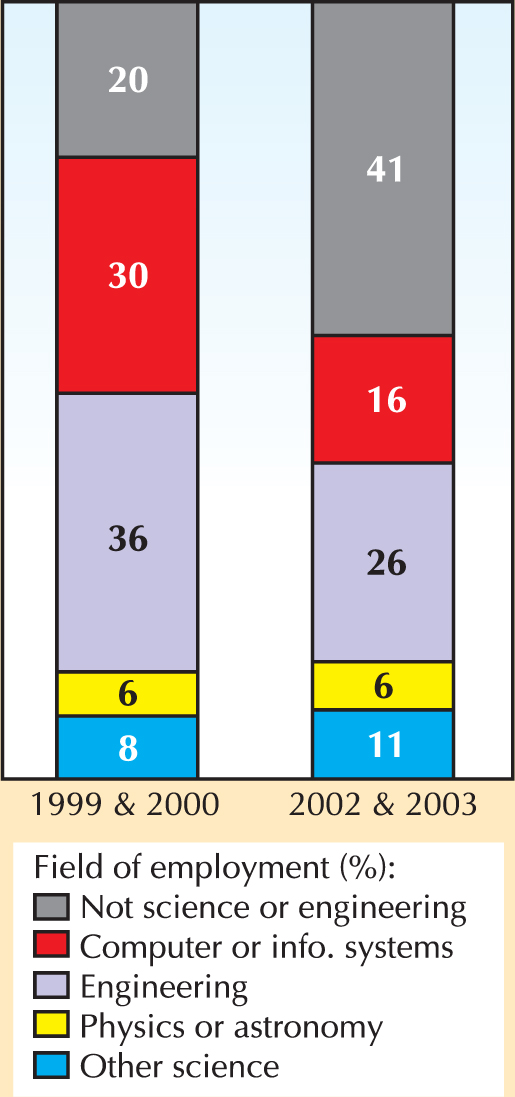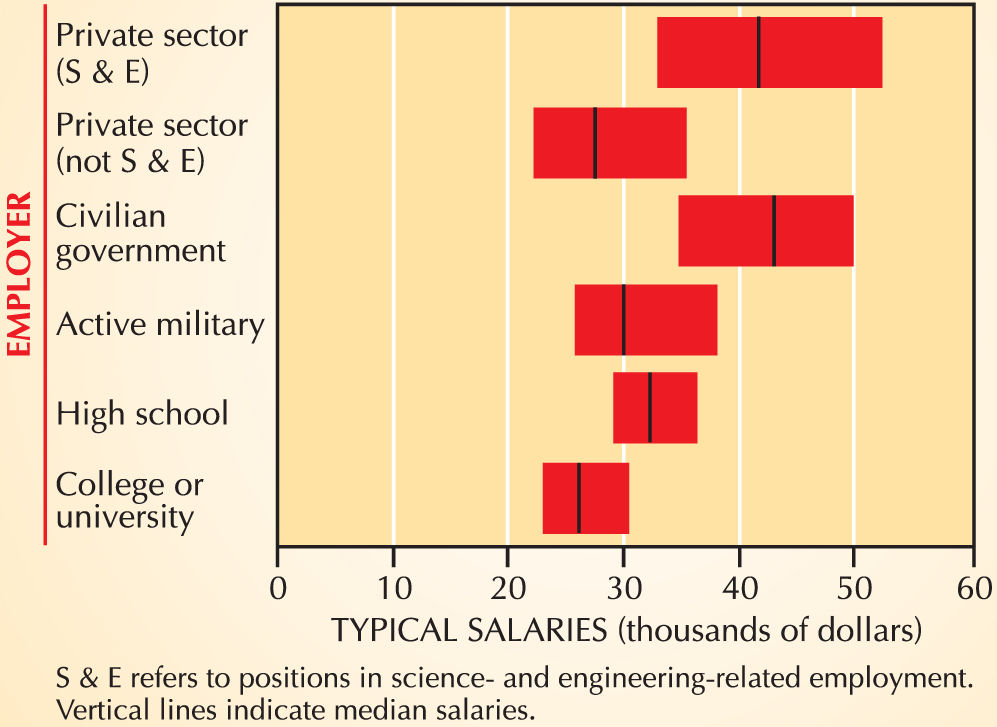Physics employment in US reflects weakened economy
DOI: 10.1063/1.2195311
The production of physics and astronomy bachelors is rising, more bachelors are doing less-technical jobs, and more physics PhDs are doing postdocs. These and other data about all levels of US physics and astronomy degree recipients from the classes of 2002 and 2003 are presented in the latest employment report by the American Institute of Physics.
The 4553 bachelor’s degrees conferred in physics in 2003 represent a 6% increase over 2002 and a 25% increase over a low in 1999. In astronomy, some 325 bachelor’s degrees were awarded in 2002 and again in 2003, a 63% increase over 2000. Women comprised 22% of the combined classes of 2002 and 2003 in physics and 44% in astronomy. Among the nearly two-thirds of physics bachelors who borrowed money to help pay for their education, the median debt was $18 000.
Reflecting a weakened economy, the proportion of physics bachelors who took jobs has declined, from 50% in 2000 to 35% in 2003. Concurrently, the proportions who were unemployed, accepted part-time positions, and enrolled in graduate school increased. In the private sector, the proportion of physics bachelors working in fields unrelated to science or engineering climbed to 41% for the classes of 2002 and 2003, up from 20% in 1999 and 2000 (see the top figure below).

Changes in field of employment for physics bachelors in the private sector
AIP STATISTICAL RESEARCH CENTER, INITIAL EMPLOYMENT REPORT

US universities conferred 1106 physics PhDs in 2003. The median time to earn the PhD was six years, with nearly 20% of recipients requiring eight years or longer. The number of PhDs awarded in astronomy departments was 88 in 2003, down from 102 in 2002.
In the combined classes of 2002 and 2003, 52% of physics PhD recipients were foreign citizens and 13% were women; in astronomy, 19% were from outside the US and 25% were women. The proportion of new physics PhDs who took postdocs rose for the third straight year to nearly 70% in 2003.
The private sector continues to be the dominant employer of physics degree recipients, but at the bachelor’s and PhD levels its share is falling—from around two-thirds of recipients who took potentially permanent jobs in the mid-1990s to about half for the combined classes of 2002 and 2003.
Overall, starting salaries for physics bachelors (see the lower figure on page 28) remained flat or declined slightly compared with two years earlier. The only salaries that went up were those of high-school teachers, which rose by about 8%. The median starting salaries for PhDs in potentially permanent positions were $42 000 in colleges, $49 000 in universities, $80 000 in the private sector, and $90 000 in the national labs.

Typical range of starting salaries for physics bachelors, classes of 2002 & 2003

More than 75% of physics bachelor’s recipients, 84% of physics PhDs, and 94% of astronomy PhDs surveyed said that if they had it to do over again, they would choose the same academic path.
A separate report on employment in the geosciences says that 58% of new PhDs took postdocs in 2003, up only slightly from the year before. In nonprofit organizations, the government, and potentially permanent positions in academia, median starting salaries were around $45 000; in industry they were $70 000.
The Initial Employment Report: Physics and Astronomy Degree Recipients of 2002 & 2003 is available on the Web at www.aip.org/statistics/trends/reports/emp.pdf
More about the Authors
Toni Feder. American Center for Physics, One Physics Ellipse, College Park, Maryland 20740-3842, US . tfeder@aip.org
